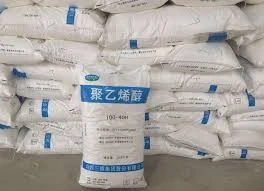The Role of Chemical Composition in Cement Production
Cement is a fundamental ingredient in the construction industry, serving as a binder that holds together various materials to form concrete. Its significance cannot be overstated, as it is the backbone of modern infrastructure, from buildings to bridges and roads. One of the most critical factors influencing the properties of cement is its chemical composition. Understanding the chemical percentages and their implications can help optimize cement performance and tailor it to specific applications.
Basic Components of Cement
Cement is primarily composed of four main chemical compounds, which significantly influence its characteristics
1. Tricalcium Silicate (C3S) – This compound is responsible for the early strength development of cement. It generally constitutes about 50-70% of the cement composition. C3S reacts quickly with water, producing heat and leading to the rapid hardening of concrete.
2. Dicalcium Silicate (C2S) – Making up about 15-30% of the cement, C2S contributes to the long-term strength of concrete when it undergoes hydration over several years. Its slower reaction compared to C3S means it is essential for developing the durability and longevity of concrete structures.
3. Tricalcium Aluminate (C3A) – Typically comprising about 5-10% of cement, C3A influences the setting time of cement. A high percentage of C3A can lead to rapid setting, which may not be suitable for all applications. It also plays a role in the resistance to sulfate attack, an essential consideration in sulfatic environments.
4. Tetracalcium Aluminoferrite (C4AF) – This component, while less critical than the others, contributes to the color and some physical properties of cement. C4AF usually makes up about 5-15% of the composition and aids in the strength development of concrete.
The Impact of Chemical Composition
cement chemical

The specific chemical percentages of these compounds determine the performance and characteristics of the final cement product. For instance, in areas where rapid construction is necessary, a cement with a higher C3S content may be preferred for its quick strength gain. Conversely, in applications requiring durability and long-term performance, such as in heavy infrastructure like bridges or highways, a higher C2S content would be advantageous.
Furthermore, the balance of C3A and C4AF in cement is crucial when it comes to resistance against environmental factors, such as corrosion and sulfate attack. Cement with lower C3A content may provide better sulfate resistance, making it ideal for use in areas where soil or water has high sulfate levels.
Testing and Quality Control
The chemical composition of cement is carefully monitored through various testing methods, ensuring consistency and quality. Techniques such as X-ray fluorescence (XRF) and scanning electron microscopy (SEM) are employed to analyze the chemical makeup of cement samples. These tests help manufacturers adhere to industry standards and regulations and provide end-users with reliable products.
Innovations in Cement Chemistry
Recent advancements in cement chemistry have led to the development of alternative cementitious materials designed to enhance sustainability. Innovations such as blending traditional cement with supplementary cementitious materials (SCMs) like fly ash, silica fume, or slag optimize the performance while reducing the carbon footprint. These materials not only replace a portion of the cement but also improve specific properties such as workability, durability, and resistance to chemical attacks.
Conclusion
The chemical composition of cement is pivotal in determining its performance and suitability for various applications. By understanding the percentages of different compounds, stakeholders can make informed decisions that optimize the use of cement in construction projects. As the industry continues to evolve, the focus on sustainable practices and advanced materials will shape the future of cement production, ensuring that it meets the demands of modern infrastructure while minimizing environmental impacts. The ongoing research into cement chemistry promises to yield even more efficient and resilient materials, securing cement’s place as a vital component of the built environment.
-
The Application and Significance of Construction RdpNewsMay.19,2025
-
Industrial Grade HpmcNewsMay.19,2025
-
Building Coating Adhesive Building Coating Adhesive HpmcNewsMay.19,2025
-
Application Of Hpmc For Detergent For Detergent In DetergentsNewsMay.19,2025
-
Application Of Hpmc Cellulose In Cement-Based MaterialsNewsMay.19,2025
-
Application Of High Quality Hpmc For Construction In The Field Of ConstructionNewsMay.19,2025




